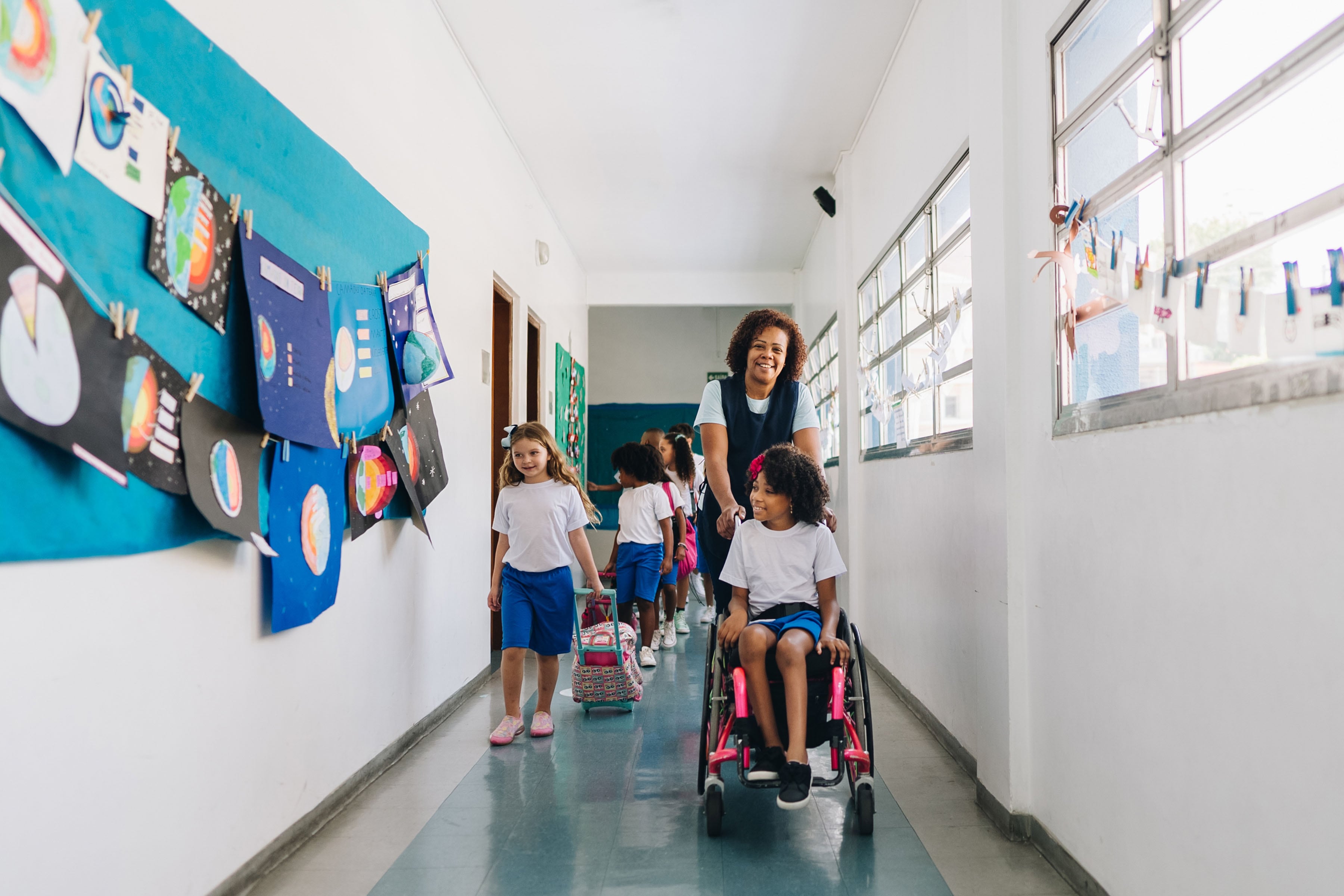Sign up for Chalkbeat Detroit’s free daily newsletter to keep up with the city’s public school system and Michigan education policy.
Michigan students are facing challenges rebounding from the COVID pandemic, and those hurdles are more pronounced among certain groups of vulnerable children who are missing more school than their peers.
Students with disabilities and economically disadvantaged students were chronically absent at a rate notably higher than the statewide average.
For the 2023-24 school year, 29.5% of students were chronically absent — meaning they missed at least 10% of school days — according to data from the Michigan Department of Education. In comparison, the rate was 37.6% for students with disabilities, and it was 40.1% for economically disadvantaged students, more than double the rate for students who are not economically disadvantaged.
The release of these numbers comes amid a federal investigation that found during the pandemic, many Michigan students with disabilities did not receive the services and instruction required under federal law. The investigation found that these children still have not received those mandated services or the compensatory measures that their families are entitled to.
Robin Lake, director of the Center on Reinventing Public Education at Arizona State University, described the findings from the investigation as “an all too common scenario.”
She noted several lawsuits across the country where parents of disabled students and other groups facing discrimination have sued state governments or school districts alleging that their kids have been neglected or mistreated.
Lake worked on the new annual report “The State of the American Student,” which has been tracking pandemic recovery for the last three years.
“We talked to parents this year, and we’ve talked to experts in special education and multilingual education, and all of them pointed out that things were very bad before the pandemic,” she told Chalkbeat.
“So [test] scores were low already, they couldn’t get too much lower. Mental health needs were higher. All of that has been the case,” Lake said. “While this report really has been focused on pandemic impacts, the theme that we’re seeing coming through when we look at this student population in particular is a system that really wasn’t working before the pandemic.”
Jeremy Singer, assistant research professor at Wayne State University and associate director of the Detroit Partnership for Education Equity and Research, agreed that the disparities are nothing new.
“We’ve known for a long time that these groups face barriers to attendance that are more significant than their less vulnerable, less disadvantaged peers,” Singer said.
He pointed out that despite some improvement in recent years, the overall chronic absenteeism rate last year ran nearly 10 percentage points higher than in 2018-19, the last full school year before the pandemic. The increase from that year was 11.2 points for students who are economically disadvantaged, and 6.7 points higher for students who aren’t.
There are many factors at play that broadly apply to students who are chronically absent. For one, Singer said mental health issues have been exacerbated for young people whose formative years were colored by the pandemic.
“So we know that levels of stress and anxiety are a little higher, and it’s also possible that the way families are treating those issues might be a little bit different,” Singer said.
In other words, some families could be more inclined to keep kids at home when they are feeling unwell, either physically or mentally.
Still, the numbers are a reminder that certain kids continue to have a much tougher time getting to class regularly, Singer added. He said his research has unraveled many of the factors that contribute to chronic absenteeism and how they hit Detroit’s vulnerable and low-income families hardest.
Kids in these households, particularly in Detroit, are up against multiple barriers to attending class regularly, from unreliable transportation and a lack of public transit to the dearth of quality affordable housing options in the city.
Singer said some solutions to chronic absenteeism include strengthening neighborhood schools — so families have an easier time accessing the schools closest to them — and making them places where people want to spend time. That means nurturing “the quality of the school and the school’s capacity to maintain strong relationships, to maintain a strong, inviting culture.”
State policy appears to be supporting some of these efforts with lawmakers approving more investments to help schools and educators.
But looking at just education funding or what schools can do to reduce chronic absenteeism misses the bigger picture, Singer said.
Local leaders must acknowledge the many systemic factors contributing to chronic absenteeism: “transportation, housing, health, employment — these things play a really big role in students’ attendance,” Singer said.
Researchers have enough information on why students are chronically absent and now it is time to shift the focus to what schools and communities are doing about it — and whether those strategies are working, he said.
Robyn Vincent is a reporter for Chalkbeat Detroit, covering Detroit schools and Michigan education policy. You can reach her at rvincent@chalkbeat.org





